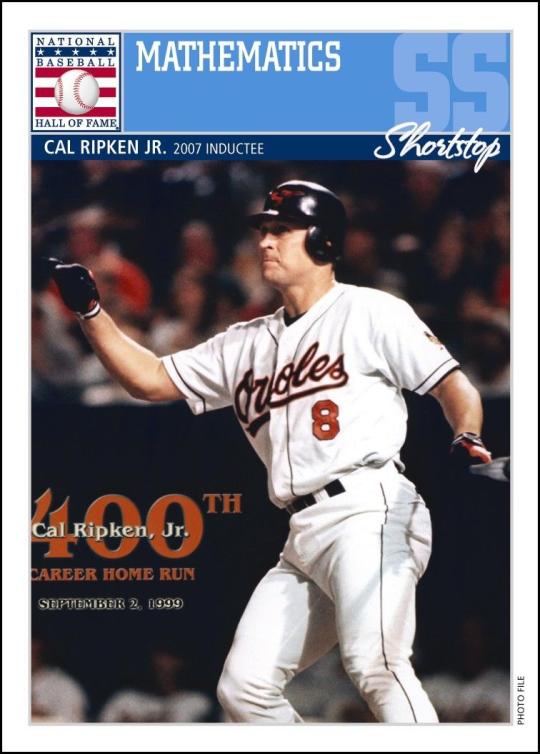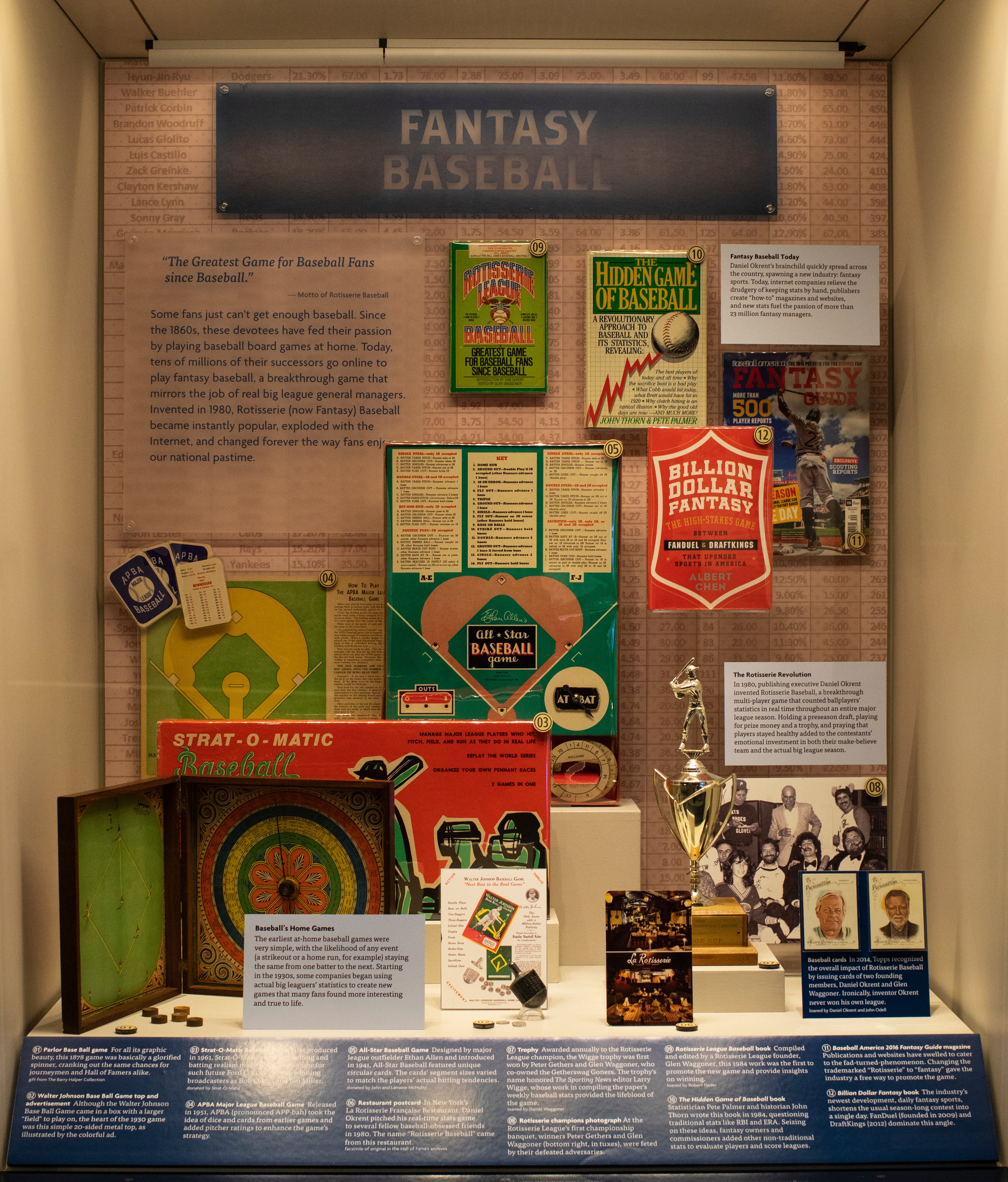Post Visit: Other Baseball Statistics (Rookie)
Lesson & Activity
1. To begin this lesson, review the formula for batting average and review that a player’s batting average indicates his or her success at a hitter. Also discuss that the most successful major league batters in history have completed a whole season with a batting average around .400.
2. Ask students to brainstorm ways that averages might relate to other baseball skills. Ask, “What are some activities that baseball players are expected to perform on the field at which they might not be successful every time.” Possible answers include: pitching a winning game, pitching many strikes, successfully stealing a base, etc.
3. Discuss that there could be (and there are) many different types of statistics for all sorts of activities that take place on the field. Students will now take a closer look at players’ home run averages.
4. Break students into small groups and give each the home run statistics attached at the end of this lesson. The statistics represent number of home runs hit by power hitters Babe Ruth, Henry “Hank” Aaron, Mike Schmidt, Ken Griffey, Jr., and Albert Pujols during their careers (or career-to-date).
5. Have students calculate how the average number of home runs hit each year by each player during his career (or career-to-date). You may need to review that this average can be found by adding up the total number of home runs and dividing that number by the number of years played.
6. Ask students to discuss the following: “If Albert Pujols plays 10 more seasons, can you use his current HR totals and average to predict how many home runs he will hit in his career?”
7. Now have students look at the careers of the other players listed. Ask, “Did they consistently meet their average number of HR’s in the last few years of their careers? How do your observations of what happened to their numbers as they neared the end of their careers alter your predictions for Pujols?” Have students share their observations and predictions with the larger group.
Conclusion:
To complete this lesson and check for understanding, have students pretend to be newspaper sportswriters and create articles about a recent baseball game, either real or fictional. Have students use vocabulary terms from this unit that describe the game's action and its statistical highlights.
Common Core Standards
CCSS.Math.Content.3.OA.A.2 Interpret whole-number quotients of whole numbers,
CCSS.Math.Content.3.OA.A.3 Use multiplication and division within 100 to solve word problems in situations involving equal groups, arrays, and measurement quantities, e.g., by using drawings and equations with a symbol for the unknown number to represent the problem.
CCSS.Math.Content.3.OA.A.4 Determine the unknown whole number in a multiplication or division equation relating three whole numbers.
CCSS.Math.Content.3.OA.B.5 Apply properties of operations as strategies to multiply and divide.
CCSS.Math.Content.3.OA.B.6 Understand division as an unknown-factor problem.
CCSS.Math.Content.3.OA.C.7 Fluently multiply and divide within 100, using strategies such as the relationship between multiplication and division or properties of operations.
CCSS.Math.Content.3.NBT.A.1 Use place value understanding to round whole numbers to the nearest 10 or 100.
CCSS.Math.Content.3.NF.A.1 Understand a fraction 1/b as the quantity formed by 1 part when a whole is partitioned into b equal parts; understand a fraction a/b as the quantity formed by a parts of size 1/b.
CCSS.Math.Content.3.NF.A.3 Explain equivalence of fractions in special cases, and compare fractions by reasoning about their size.
CCSS.Math.Content.4.OA.A.3 Solve multistep word problems posed with whole numbers and having whole-number answers using the four operations, including problems in which remainders must be interpreted. Represent these problems using equations with a letter standing for the unknown quantity. Assess the reasonableness of answers using mental computation and estimation strategies including rounding.
CCSS.Math.Content.4.NBT.A.2 Read and write multi-digit whole numbers using base-ten numerals, number names, and expanded form. Compare two multi-digit numbers based on meanings of the digits in each place, using >, =, and < symbols to record the results of comparisons.
CCSS.Math.Content.4.NBT.B.6 Find whole-number quotients and remainders with up to four-digit dividends and one-digit divisors, using strategies based on place value, the properties of operations, and/or the relationship between multiplication and division. Illustrate and explain the calculation by using equations, rectangular arrays, and/or area models.
CCSS.Math.Content.4.NF.C.6 Use decimal notation for fractions with denominators 10 or 100.
CCSS.Math.Content.5.OA.A.2 Write simple expressions that record calculations with numbers, and interpret numerical expressions without evaluating them.
CCSS.Math.Content.5.NBT.A.3 Read, write, and compare decimals to thousandths.
CCSS.Math.Content.5.NBT.A.4 Use place value understanding to round decimals to any place.
CCSS.Math.Content.5.NBT.B6 Find whole-number quotients of whole numbers with up to four-digit dividends and two-digit divisors, using strategies based on place value, the properties of operations, and/or the relationship between multiplication and division. Illustrate and explain the calculation by using equations, rectangular arrays, and/or area models.
CCSS.Math.Content.5.NF.B.3 Interpret a fraction as division of the numerator by the denominator (a/b = a ÷ b). Solve word problems involving division of whole numbers leading to answers in the form of fractions or mixed numbers, e.g., by using visual fraction models or equations to represent the problem.


